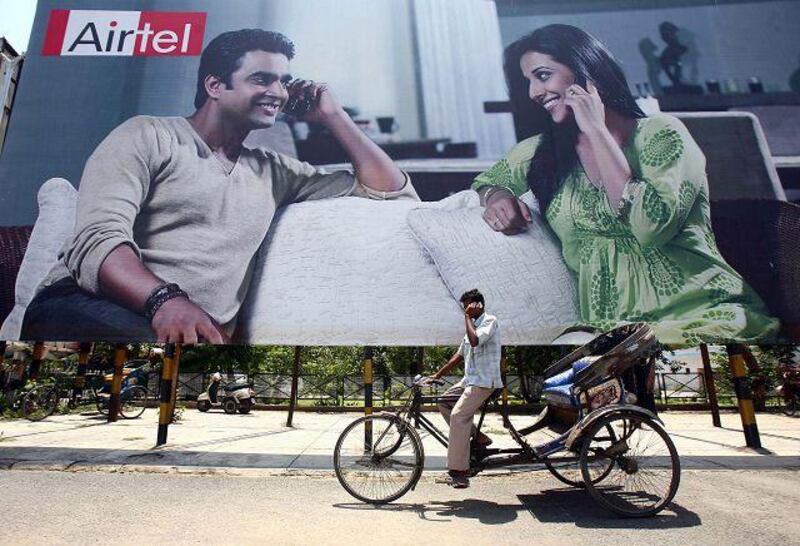MUMBAI, INDIA // The Indian growth story is now inexorably spreading to its hinterlands. Rural India, home to 742 million people, or about two thirds of India's 1.17 billion people, is fast emerging as a new growth market. Largely insulated from the worst of the global downturn, the country's rural consumers, known to be at the bottom of India's economic pyramid, are spending like never before.
To tap this largely untouched market, India's leading retailers, Big Bazaar, Pantaloon Retail and Shoppers Stop among others, plan ambitious forays into rural markets. "No consumer goods company today can afford to forget that the rural market is a very big part of the Indian consumer market," says Jagmohan Singh Raju, a professor of marketing at University of Pennsylvania's Wharton Business School. "You can't build a presence for a brand in India unless you have a strategy for reaching the villages."
For instance, the Future Group, which owns Big Bazaar and Pantaloons, plans to increase the number of its stores from 22 to 52 by the end of next year, all of them in rural areas, with an investment of 30 million Indian rupees (Dh2.3m) in each of its 929-square-metre stores. Many leading domestic retailers such as AV Birla, ITC and Reliance have established rural retail hubs. Godrej Consumer Products intends to increase revenue from rural areas from 38 per cent to 55 per cent in the next three years by increasing its distribution network from 18,000 villages to 50,000.
According to a study by India's Associated Chambers of Commerce and Industry, rural markets in India will grow to a potential of between US$500 billion (Dh1.83 trillion) and $600bn from the current $487m by 2020, largely due to its sheer size. Rural India is pushing up demand for fast-moving consumer goods, two-wheelers, cars and retail faster than urban areas, and account for more than 60 per cent of the national demand.
In June, car sales in India climbed 8.3 per cent, buoyed by rising demand in rural markets. Mahindra and Mahindra is bullish on the rural markets, with its utility vehicle the Mahindra Scorpio clocking 65 per cent sales from rural markets compared with 20 per cent earlier. Revenue from Indian mobile services is likely to grow at a compound annual rate of 18.4 per cent to touch $25.6bn by 2011, with most of the increase coming from rural markets. According to Ernst & Young, 40 per cent of the next 250 million Indian mobile users - 100 million people - are likely to be from rural areas, and by 2012, rural users will account for more than 60 per cent of the total telecom subscriber base in India.
Until five years ago, the perception was that rural consumers were attracted only to indigenous products. But they are now whetting an insatiable appetite for consumer goods. According to the Associated Chambers of Commerce and Industry, 70 million rural Indians will own TV sets, mobile connections and two wheelers compared with 48 million urban Indians. Last year, the rural market accounted for a robust 57 per cent of the $16.03bn market in India for fast-moving consumer goods, including soap and paper products.
Also, overall advertising spending climbed about 10 per cent in India last year, with rural advertising growing at more than four times that rate. "Rural markets have great potential," says Dilip Dandekar, the chairman of Camlin, a stationery and art-supplies chain. "Rising rural incomes, mainly from healthy growth in agriculture, combined with better penetration by companies into village markets, have pushed up demand."
He says Camlin posted a 32.4 per cent rise in net sales for the latest financial year largely because of "a thrust on rural markets to make up for the loss of sales in urban areas". But poor infrastructure is a key challenge to penetrating rural markets. Operating a well-stocked retail store in an Indian village, marked by dismal road infrastructure and frequent power outages even if it is connected to the power grid, comes across as a challenge.
The ruling Congress-led United Progressive Alliance says bolstering infrastructure in rural areas is its key priority. Out of the total projected investment of $283.83bn earmarked by the central government for infrastructure, $80.82bn would be spent this year on rural infrastructure, the government says. India's previous retail boom was built around the country's upwardly mobile middle class, a 300 million-strong high-earning, high-spending urban populace. Riding the wave of India's torrid economic boom in recent years, the conspicuously consuming middle class shed the spartan lifestyle of previous generations and adopted a new attitude to spending, propelling India into becoming the world's 12th-largest consumer market.
Because of the formidable spending power of the middle class, consumption soared over the years to a whopping 17tn rupees and was expected to peak at 70tn rupees by 2025, vaulting India to be the world's fifth-largest consumer market. But now, buffeted by the economic slowdown, the middle class, facing the dour prospect of job cuts and a crimp in salaries, is eschewing the spending sprees of recent years.
To offset losses due to the middle class tightening its purse strings, retail giants, after making their presence felt in cities, are going all out to tap this largely untouched rural market. "The taste of urban consumerism has reached its saturation point," says Kumar Rajagopalan, the chief executive of the Retailers Association of India. "Rural markets guarantee growth." @Email:business@thenational.ae





